How to align your Change Management activity with
an agile approach
One of the key topics that is a recurring theme in our discussions with clients is how Change Management can support an Agile approach to delivering projects.
It is something we have been working clients on from a project perspective for some considerable time now and as we continue to research and develop our expertise and thinking on the topic we wanted to find a way to share the results with you.
And this comprehensive guide to aligning your Change Management approach in an agile environment is the result. Before you dip into the detail you might want to quickly watch Audra Proctor as a "scene-setter" and as she explains why agile organizations need agile Change Management in the video below.
We hope you find the rest of the guide helpful.
There is little doubt that Agile is a hot topic in boardrooms around the world. But what does it really mean for organizations – and more specifically for teams that are delivering Change Management in organizations with an Agile agenda?
That set us thinking – and as we sketched out some of our thoughts on the relationship between Agile and Change Management we thought it would be great to lay it out- which is what we did in our infographic, How Agile is turning Organizational Change on its head. This considers:
You can view the infographic in our blog post here.

You can also download a PDF copy of the infographic in case you want to share it with colleagues.
So what was the genesis of not only Agile Change Management – but of Agile as a concept itself?
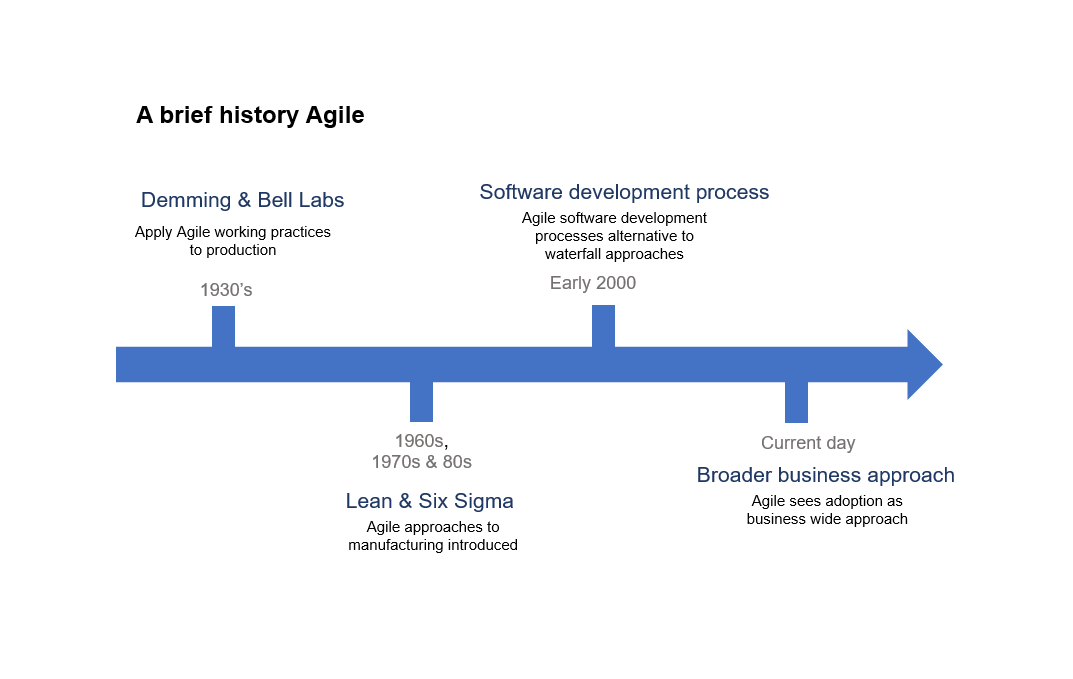
Source: Changefirst 2019
But for our purposes, in a change management context, it is the unprecedented success of Agile in software teams has led to its principles spreading like wildfire through teams and across functions in organizations. and making it one of the hottest topics in boardrooms across the globe. For context, consider some of the following stats:
The result? A combination of this drive from the top and a whole raft of other business pressures is demanding that business units take an Agile approach to planning, delivering and evaluating their activities.
And if the business is using this type of approach, the challenge for Change Management practitioners is to adopt a completely new and revolutionary approach to change implementation that mirrors and support this.
Alongside all of this, the environment that organization are working in has changed considerably.
The impact of digital transformation and side effects like an unprecedented level of competition across a wide variety of sectors means the increase in the sheer volume and quantity of change projects – coupled with shorter and shorter timescales - means the business of delivering change has changed. And markedly so.
We take a closer look at this and what it means in terms of a more agile approach to Change Management in our short video below:
To date, Change Management has always been an enabling capability allowing organisations to successful transform and extract investment value through people.
For us it has always been about closing the change Value Gap - the difference between successful installation and implementation in your change projects. Installation is about putting the hard stuff in – the structures, the processes and software. But real implementation is about getting people to commit to new ways of working and changing behaviour. And closing the Value Gap.
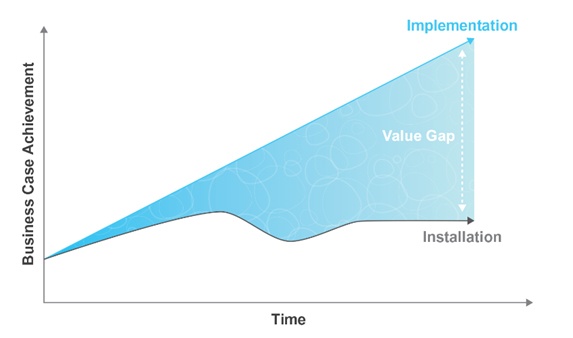
Source: Changefirst 2019
None of this has changed in an Agile context – in fact, if anything, with the huge disruption caused by new technology this is more important than ever. In fact, 2/3rd of companies in a recent survey by McKinsey rated implementation a higher priority than 3 years ago.
However, we believe strongly that new operating models like Agile mean we need to consider new change management models to try to respond to different challenges and continue to be relevant and successful in our efforts.
We’re constantly hearing that more “traditional” change management approaches are being called into question and are considered to be slowing down Agile efforts. At the extreme end, we’re hearing that change management is dead because these traditional approaches are:
However, we believe strongly that new operating models like Agile provide an opportunity for a different change management approach. One that can respond to the challenge and be even more relevant going forward.
For us, the necessary adjustment in your Change Management approach has its roots in Agile itself. Below are 4 key considerations for Change Management to be able to match – and deliver against – the central drivers of Agile.
As shown in our diagram below that takes a closer look at 4 key drivers of Agile:
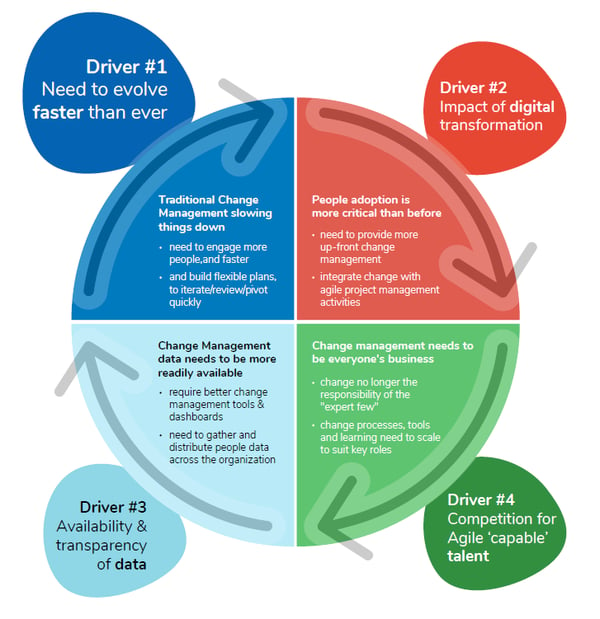
You can find out more about this in our blog post here.
As delivering in an Agile way has increasingly become part of the approach to delivery across business functions then Enterprise Agility has become the new holy grail.
Based on our own research it clear that a significant number of organizations that see Enterprise Change Management as a key building block of Enterprise Agility and are focused on developing this capability across their businesses. In a period where the level of technological, competitive and external disruption is at an unprecedented high this is a truly major undertaking for any organization, but the benefits of success are substantial – and may even shape the success or failure of many businesses in the medium term.
In fact, as McKinsey have suggested – transforming your ways or working to be more Agile could be the last reorganization you need for a very long time in your organization.
So how do you get Enterprise Agility right? And what is the role for ECM in supporting this ground-shift in approach?
We believe there are 6 key considerations here as follows:
Organizational culture continues to eat the value of business transformation for lunch. Considering some of the factors critical to mitigating culture risks, we feel confident in declaring that agile projects require an agile culture to succeed.
Agile transformations are more likely to succeed with comprehensive change management skills and capabilities available in all places where an Agile-friendly mindset needs to be developed.
To effectively build enterprise wide change capabilities:
For organizations looking to put in place Enterprise Level Change Management capabilities to support all of this, there is a build or buy consideration at play. The simple question is, “Do you have the time or resources to build all (or even part of) requirements outlined in points 1-5?”
At Changefirst we have created a real buy option in our digital change management platform that is; content-rich, based in decades of research, is highly applicable, scalable, configurable and leverages digital technology to make it highly cost effective.
Find out more in our blog post Enterprise Change Management: the key building block of Enterprise Agility.
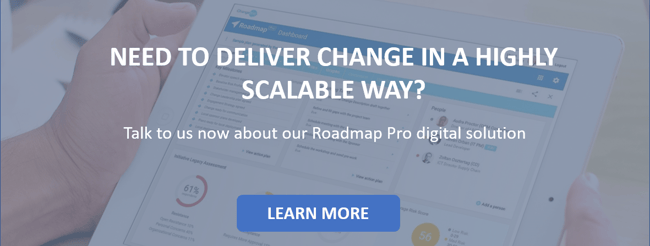
Capability building needs to be repeatable if you are going to be able respond to the different and emerging changes needed to create Enterprise Agility.
Managed, pragmatic capability building around levels of maturity is key to success. It’s about quickly understanding an organization’s starting point and having a plan to deliver the up-skilling and supporting infrastructure needed to get to a change management maturity level that is sustainable. All of this depends entirely on their current level of maturity as shown in the diagram below.
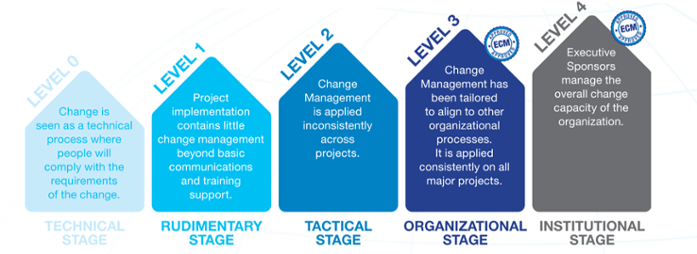
Source: Changefirst 2019
This is useful for the organization as a means to:
And the starting point for all of this is Effectively Baselining your Enterprise Change Management strategy. And also assessing the level of change your organization is going to be able to manage – which we call Change Load.
Change Load is a useful measure to determine where your Change Management maturity is sufficient to support your organization's ambitions. We use an online ECM tool which is available as part of our onboarding for our Roadmap Pro platform to assess both.
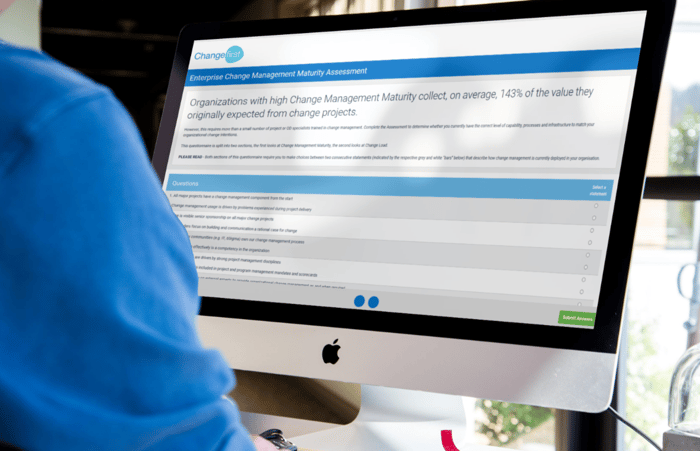
Using a series of questions, the tool allows you to build up a picture of the depth of Change Maturity in your organization.
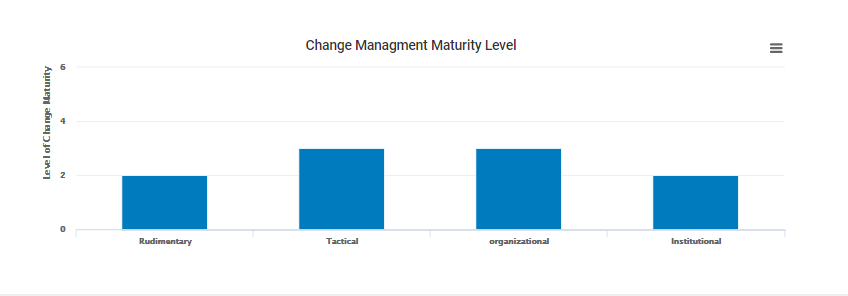
But at the same time, it also provides an indication of Change Load.
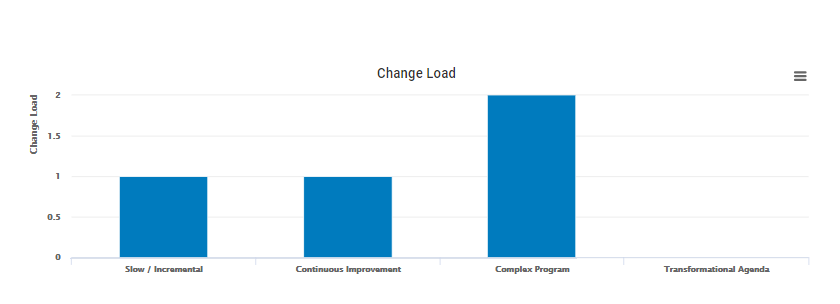
Your results give you an indication of where your current level of Change Load falls across:
You can try a free version of the tool here.
It’s also important to stress the need to be an active Sponsor of your Agile agenda in developing and delivering on Agile promises and ambitions in your organization. With so much being redefined across our economic and political landscapes, delivering Agile is more of a target range than an end state. It’s about:
And like any other aspect of Change Management, Change Leadership is something that you have to develop and measure across the organization. At Changefirst, we use an online tool called the Change Leader Assessment - which is part of a suite of assessment tools available in Roadmap Pro – to assess change risks around a number of key leadership variables as shown below.
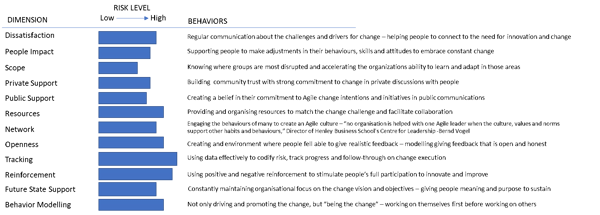
Here we want to get a little bit more prescriptive – and provide some practical advice on how your Agile Change Management activities can map to agile on a regular basis.
A good starting point is to first consider the two levels of agile that are being considered in organizations right now, namely:
So let's take a closer look at each in turn
This first level of agile is strategic and all-encompassing. There is nothing small “a” about it, as it is concerned with the direction and velocity of the organization as a whole. Making the entire entity more Agile in an overall approach that demands a model of Enterprise Change Management capability that is responsive and relevant to the needs of a fast-paced organizational agenda.
This needs Change management aligned with the agile development processes.
Agile projects still need to be implemented if you are to extract business value. Successful implementation requires people to be engaged and committed to new processes and ways of working, and the iterative nature of Agile projects requires more people engagement and faster turn-arounds.
Listen to Audra Proctor, CEO of Changefirst as she explains more about how to align your Change Management activity with an Agile approach.
So, our change management framework needs to align more closely with this agile development process to keep up and enable, rather than hinder, success. The diagram below shows what this alignment might look like; using people data and interactive processes inputs to be ready to pivot as sprint reviews and retrospectives drive changes in project direction.
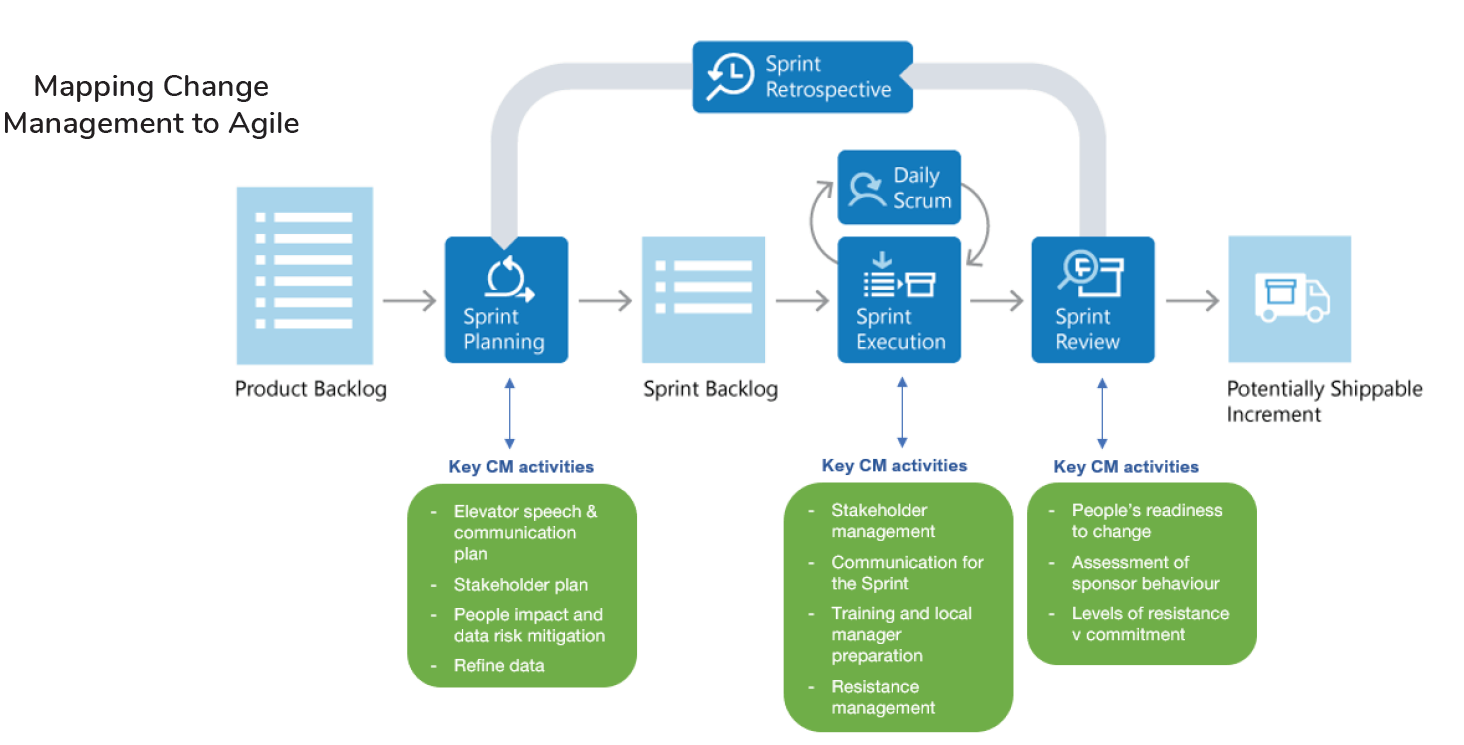
Source: Changefirst 2019
Amidst the need for speed, questions about the continued relevance of Change management seem to be fueled by the emergence of some myths about Agile that we feel are worth debunking, before we close.
Here are some key ones we come across in our work with clients and, in each case, we have tried to respond by outlining what we ACTUALLY see in practice.
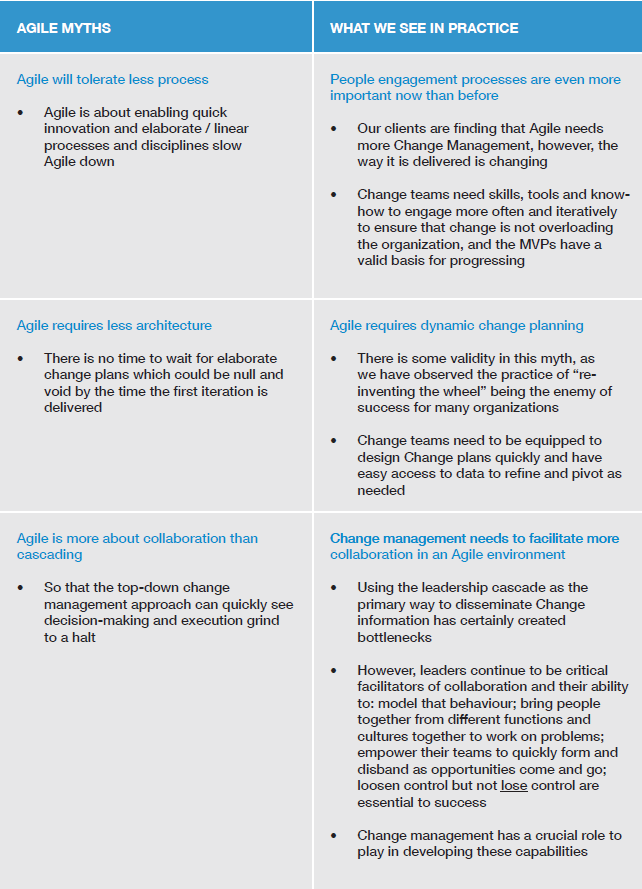
Find out more in our blog post Enterprise Change Management: the key building block of Enterprise Agility.
So where does all of this leave us in our analysis of an Agile Change Management approach?
What is clear is that the requirements and demands of both organizational and Agile development processes means that organizations need more Change Management not less. And also that it needs to be a new brand of approach. One that is more adaptive and flexible to suit the needs of the Agile approach.
Along the way there are likely to be stumbling blocks to overcome. For example, concepts like the idea of minimum viable product or MVP can often create a degree of uncertainty for those involved but Change Management has a key role in overcoming this.
In particular, feedback from an MVP may take you in a completely different direction than was laid out in your original plan, and this could be when uncertainty is at its highest level amongst staff in the organization. However, the existence of a tried and tested process and set of change diagnostics that enable you to quickly access people data to assess where you are – and help you to decide how to move forward – can help overcome any issues and ensure project success.
Which is why Agile Change Management – and having the platform and tools to deliver it are more important than ever before.
Take an Agile approach to your change implementation with Roadmap Pro
If delivering change in an Agile environment is key then you might want to take a look at Roadmap Pro - our powerful Change Management platform that:
 |
|
